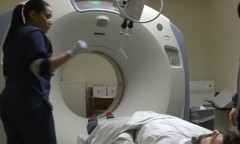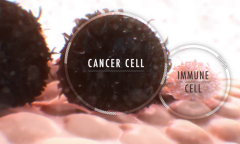By KM Diaz, | April 14, 2017

Researchers assume that higher altitude exposes pilots to excess UV radiation. (YouTube)
In the past decades, safety regulations have been implemented for certain jobs to decrease the workplace-related cancers. However, some carcinogens take decades to appear, so people who worked in different industries over the past 40 years may now be reaping the consequences of being exposed to toxins.
Like Us on Facebook
Organizations like Occupational Safety and Health Administration have sought to manage exposure to toxins more carefully. But some accidents still happen due to lax adherence to the rules.
Here are the top 10 jobs that may increase the risk of cancer.
Rubber Manufacturing
The workers in this line of work are exposed to dust and vapors since rubber is made up of chemicals, and this poses serious health risks. The Centers for Disease Control and Prevention stated that studies have revealed excess deaths in this job, particularly due to bladder, stomach, and lung cancer.
The American Cancer Society also includes leukemia and lymphoma, and consider the rubber industry as one of the most exposed jobs to carcinogens. Aside from inhalation, the carcinogens in the rubber industry can also be acquired through skin contact.
Agricultural Jobs
A previous study found that women who work in the agricultural fields have a 35 percent higher risk of having breast cancer. Women are also prone to lung cancer due to exposure to secondhand smoke, industrial chemicals, and radon.
An Australian study concluded that agriculture belongs to the top five jobs for cancer risks. Exposure to pesticides, fertilizers, engine exhaust, and other elements may be the reason for increasing the risks of leukemia and lymphoma.
Hairdressers and Barbers
A study published in 2009 revealed that hairdressers and barbers have a higher rate of acquiring cancers of the larynx, lungs, and bladder. About one-third of women over the age of 18 and 10 percent of men are using hair dye with solutions often seen in professional salons, frequent exposure to these chemicals over prolonged period increases the risk of cancer.
Mechanics
Some workers in the field of mechanics still use asbestos for clutch arrangements and brake linings because it has heat-resistant qualities. Apparently, asbestos is also one of the leading causes of mesothelioma, a nasty form of cancer. Mechanics workers also have frequent contact with petrol that contains benzene, which has identified as one of the causes of leukemia.
Construction Workers
Construction workers are also at risk of the danger of asbestos since it is still found in older buildings. The painting crews and others workers related to the construction industry are also at risk.
Manicurists and Pedicurists
Multiple myeloma and lymphoma may likely to develop among cosmetologists due to exposure to chemicals used for painting, hardening nails, and cleaning. Formalin is used to harden nails, while titanium dioxide is used in the powder for artificial nails and polishes, these two are known carcinogenic.
The Environmental Protection Agency suggests that wearing facial masks is necessary, and shops must have proper ventilation.
Plastics Workers
Workers in the plastic industry can also develop kidney, larynx, and liver cancers due to cadmium, wood dust, and other toxic fumes exposure, according to the American Cancer Society.
Mining
Underground workers have frequent contact with uranium and radon; the two are known to increase the risk of cancer. Studies have shown that living in close vicinity to mines can increase the risk of cancers like mesothelioma, thyroid, stomach, and brain cancer.
Metalworking
Women working in welding and other metal-related jobs reportedly have a 75 percent higher risk of developing breast cancer. The job also puts workers at risk of larynx and kidney cancers, according to the American Cancer Society.
The dangers in metalworking are the fluids used from overheating the metals. Although some metal-related industries have implemented some precautions, inhalation of fumes and skin contact with the fluids is still a concern.
Pilots
Some studies have found that pilots and other flight crews may develop malignant melanoma, the deadliest form of skin cancer. Researchers assume that higher altitude exposes pilots to excess UV radiation. According to WebMD, cosmic radiation can also contribute to increasing the risk of malignant melanoma.
-
Use of Coronavirus Pandemic Drones Raises Privacy Concerns: Drones Spread Fear, Local Officials Say

-
Coronavirus Hampers The Delivery Of Lockheed Martin F-35 Stealth Fighters For 2020

-
Instagram Speeds Up Plans to Add Account Memorialization Feature Due to COVID-19 Deaths

-
NASA: Perseverance Plans to Bring 'Mars Rock' to Earth in 2031

-
600 Dead And 3,000 In The Hospital as Iranians Believed Drinking High-Concentrations of Alcohol Can Cure The Coronavirus

-
600 Dead And 3,000 In The Hospital as Iranians Believed Drinking High-Concentrations of Alcohol Can Cure The Coronavirus

-
COVID-19: Doctors, Nurses Use Virtual Reality to Learn New Skills in Treating Coronavirus Patients












